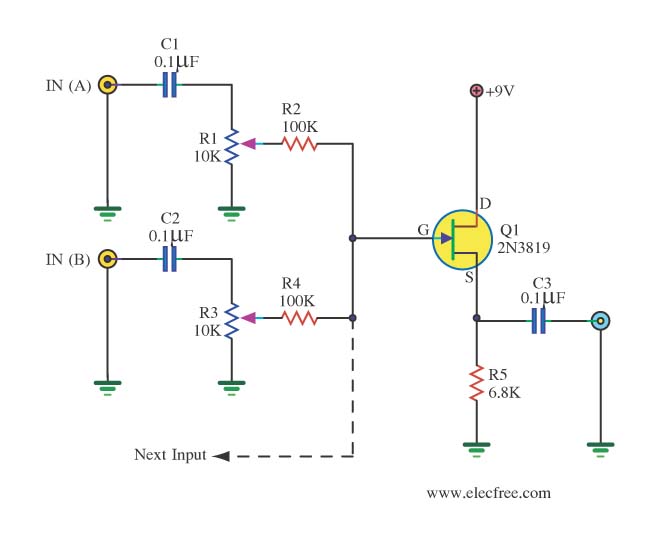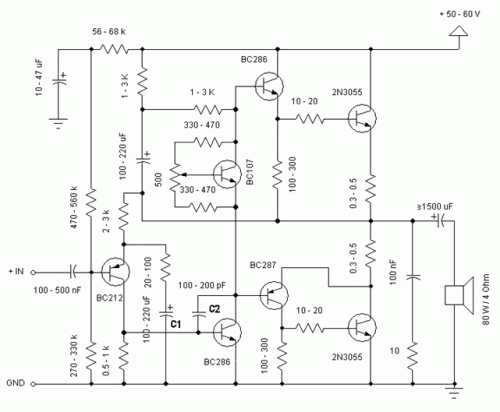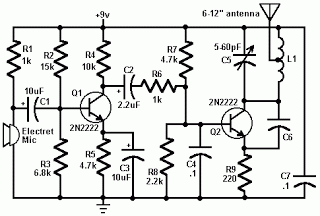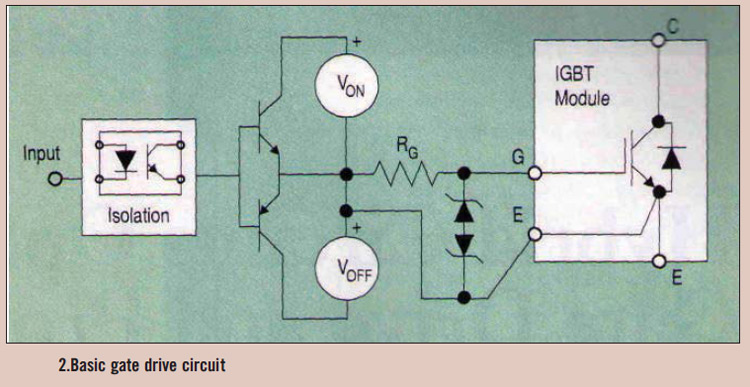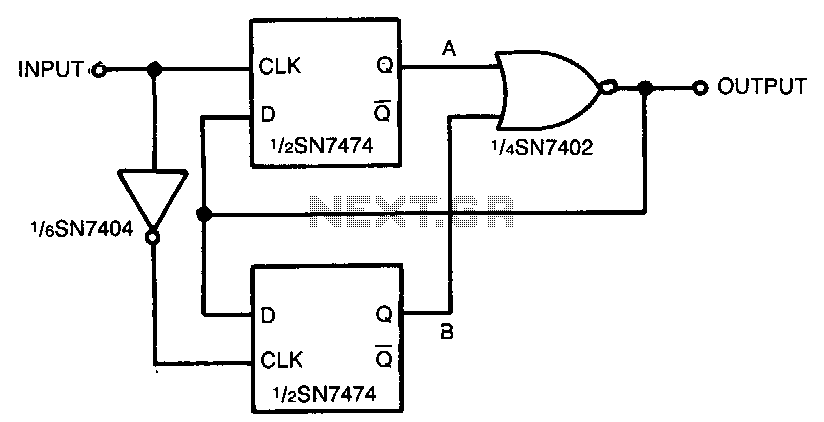
Over-temperature alarm circuit
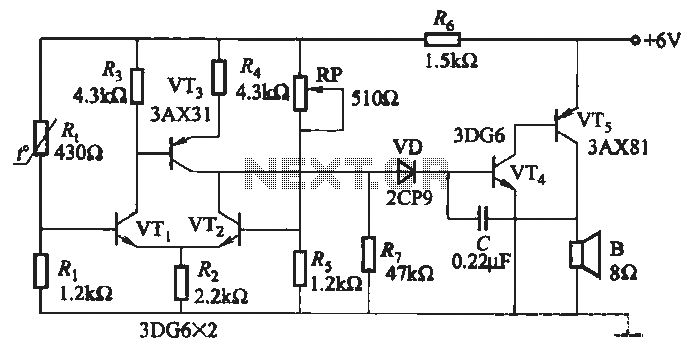
A negative temperature coefficient thermistor is utilized as the temperature sensing element (Rt). The circuit includes a resistor (Ri), a resistor (Rs), a potentiometer (RP), and the thermistor (R) to form a temperature bridge. A differential amplifier is created using transistors (VT1 and VT2). The output circuit consists of transistor (VD) and transistor (VT3), along with a capacitor (C) to form an audio oscillator. The adjustment potentiometer (RP) allows for changes in the temperature setting.
The circuit operates on the principle of a negative temperature coefficient (NTC) thermistor, which decreases its resistance as temperature increases. This characteristic is utilized in the temperature sensing element (Rt) to provide a variable resistance that is proportional to the ambient temperature. The combination of resistors (Ri and Rs) and the potentiometer (RP) establishes a temperature-sensitive voltage divider, which is critical for the temperature bridge configuration.
The differential amplifier, constructed with transistors (VT1 and VT2), amplifies the voltage difference generated by the temperature bridge. This amplification is essential for precise temperature measurements and enhances the sensitivity of the circuit. The output of the differential amplifier is then fed into the output stage, which consists of transistor (VT3) and a diode (VD), forming a critical part of the output circuit.
The audio oscillator is formed using transistor (VT4) along with capacitor (C), which generates an audio frequency signal based on the temperature readings. The oscillation frequency can be adjusted via the potentiometer (RP), allowing for customization of the temperature setting according to specific application requirements. This flexibility is particularly useful in applications where precise temperature control is necessary.
Overall, this circuit exemplifies a sophisticated approach to temperature sensing and control, integrating various electronic components to achieve a reliable and adjustable output based on temperature variations.It uses a negative temperature coefficient thermistor for temperature sensing element Rt. By the resistor Ri, Rs, , potentiometer RP and thermistor R. Composition temperature bridge; by the transistor VTi, VT2 constituting the differential amplifier; by the transistor and diode VD composition VTs output circuit; by the transistor VT4, VTs and capacitor C etc. audio oscillator. Adjustment potentiometer RP, can change the temperature setting.
The circuit operates on the principle of a negative temperature coefficient (NTC) thermistor, which decreases its resistance as temperature increases. This characteristic is utilized in the temperature sensing element (Rt) to provide a variable resistance that is proportional to the ambient temperature. The combination of resistors (Ri and Rs) and the potentiometer (RP) establishes a temperature-sensitive voltage divider, which is critical for the temperature bridge configuration.
The differential amplifier, constructed with transistors (VT1 and VT2), amplifies the voltage difference generated by the temperature bridge. This amplification is essential for precise temperature measurements and enhances the sensitivity of the circuit. The output of the differential amplifier is then fed into the output stage, which consists of transistor (VT3) and a diode (VD), forming a critical part of the output circuit.
The audio oscillator is formed using transistor (VT4) along with capacitor (C), which generates an audio frequency signal based on the temperature readings. The oscillation frequency can be adjusted via the potentiometer (RP), allowing for customization of the temperature setting according to specific application requirements. This flexibility is particularly useful in applications where precise temperature control is necessary.
Overall, this circuit exemplifies a sophisticated approach to temperature sensing and control, integrating various electronic components to achieve a reliable and adjustable output based on temperature variations.It uses a negative temperature coefficient thermistor for temperature sensing element Rt. By the resistor Ri, Rs, , potentiometer RP and thermistor R. Composition temperature bridge; by the transistor VTi, VT2 constituting the differential amplifier; by the transistor and diode VD composition VTs output circuit; by the transistor VT4, VTs and capacitor C etc. audio oscillator. Adjustment potentiometer RP, can change the temperature setting.

